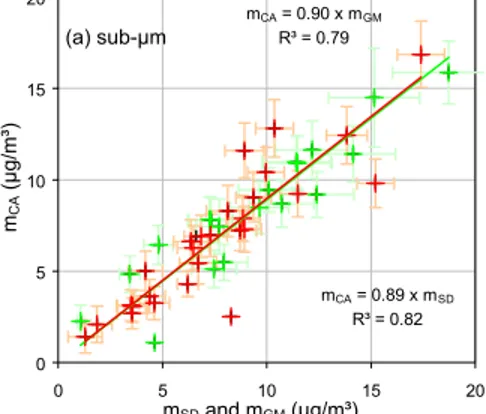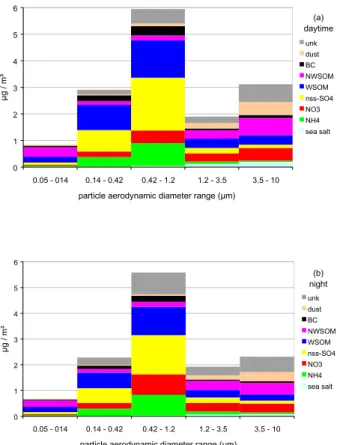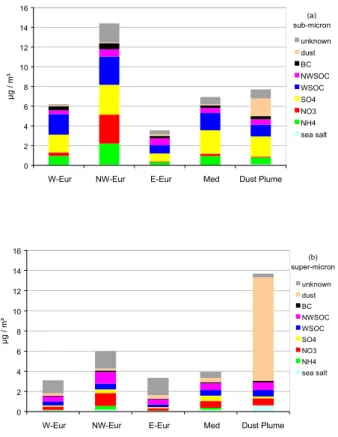Size-segregated aerosol mass closure and chemical composition in Monte Cimone (I) during MINATROC
Texto
Imagem
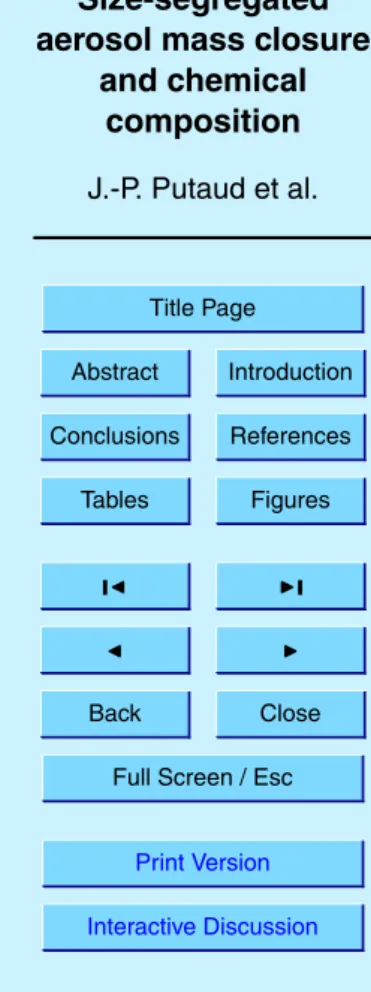
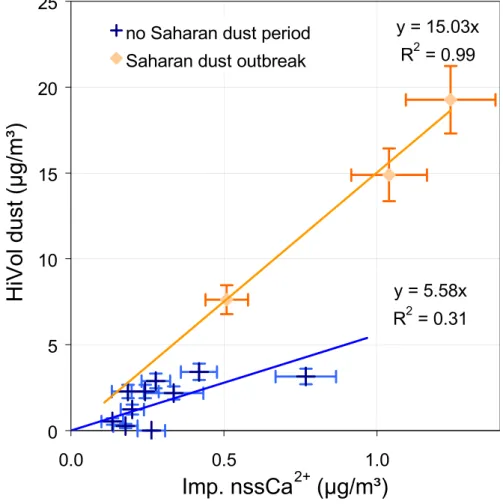
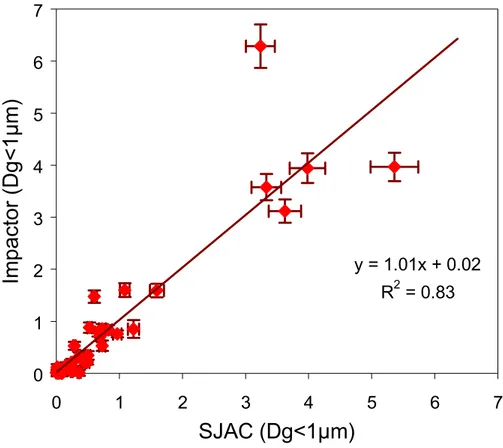
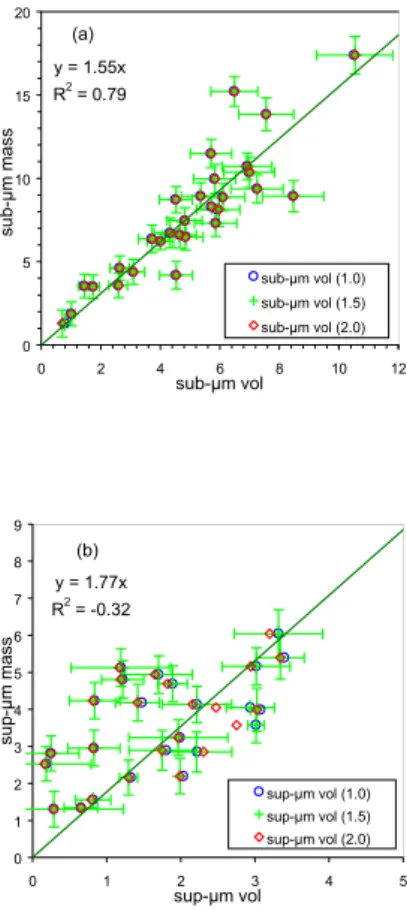
Documentos relacionados
We find that the variability in the CCN concentrations in the central Amazon is mostly driven by aerosol particle number concentration and size distribution, while variations in
The well- predicted aerosol quantities, such as aerosol number, mass composition and optical properties, and the inclusion of full aerosol-cloud couplings lead to
The average size-resolved mass concentrations (µg m − 3 , Conc.) and volume fractions ( f ) of chemical compositions from size- resolved AMS measurements during the foggy, hazy and
In this study, we analyzed number concentration and size distribution of aerosol particles, together with the mass concentration and chemical composition of UFPs and PM 1
Aerosol mass loading was calculated from the FMPS measurements by applying the determined aerosol density after taking into account the aerosol deposition on the chamber wall
Measurements of aerosol chemical composition and aerosol optical depth in the Nepal Himalaya have clearly shown the build up of aerosols in the pre-monsoon season during the winter
In simulation SCAV- w the scavenging processes within the orographic cloud im- pact the aerosol size distribution by reducing the number and mass of unactivated aerosol particles..
We report first results obtained from chamber produced secondary organic aerosol (SOA) from ozonolysis of isoprenoids and from ambient aerosol as measured during the
